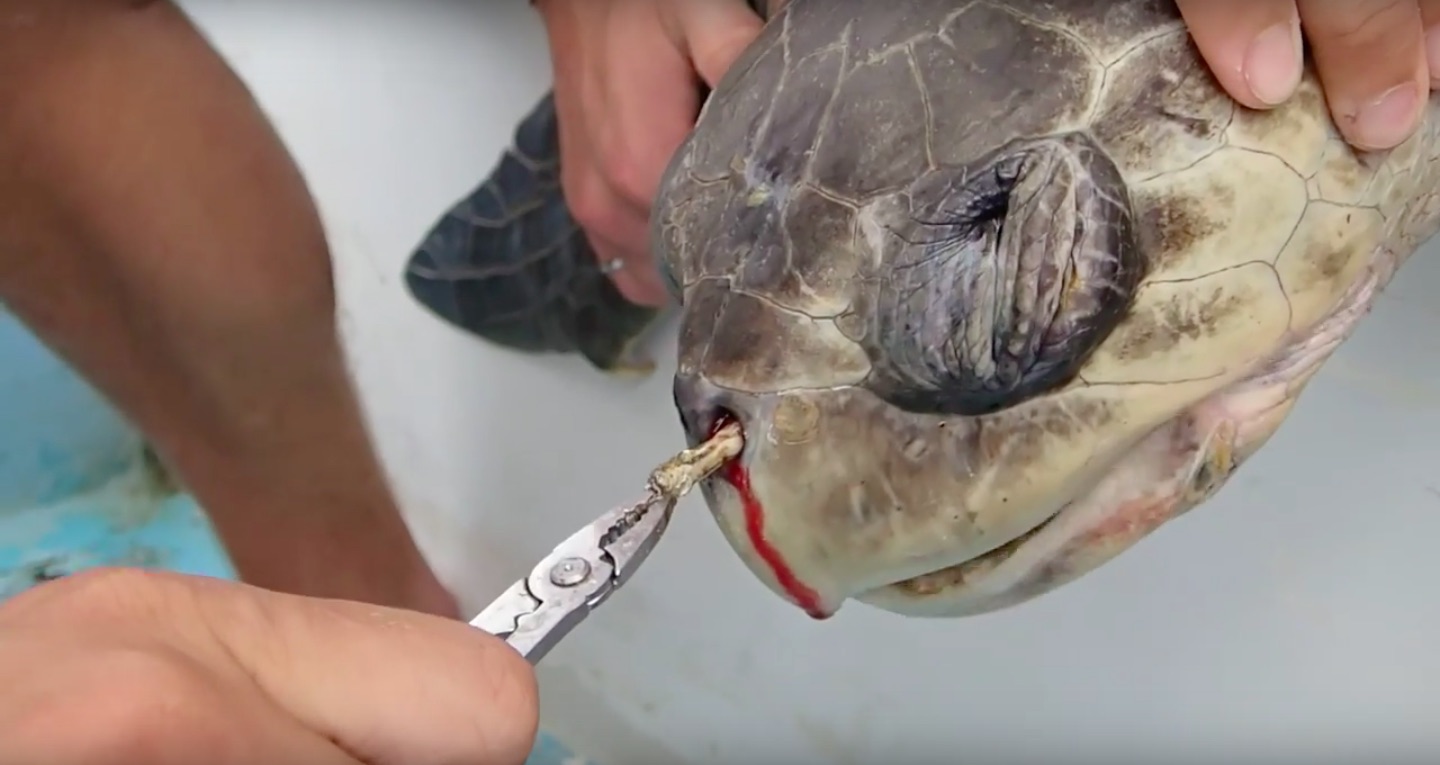Across the United States, more and more cities are banning plastic grocery bags with the goal of helping the environment and protecting ocean-dwelling creatures. I think that this is an important step in the fight to save our planet, and I’m pleased to see that the movement has inspired another campaign – the elimination of single-use plastic straws.
According to the National Academy of Sciences (PNAS), in 2015, the plastic pollution in the ocean had reached a concentration of 580,000 pieces per square kilometer, and global plastic production is increasing exponentially – the rate is doubling every 11 years, which means that between 2015 and 2026, we will make as much plastic as has been made since production began. In fact, a study by the Ellen MacArthur Foundation concluded that, at our current rates of production, there will be more plastic than fish in the ocean by 2050.

credit: Christine Figgener, http://puranatura.zenfolio.com
Marine life has a 50% mortality rate after ingesting plastic, and studies have found that approximately 71% of seabirds and 30% of sea turtles have been found with plastic in their stomachs. In fact, out of the seven known species of sea turtles, six (all of which are listed as vulnerable or endangered) have been known to ingest plastic debris. And one of the biggest contributors to this horrible situation is plastic straws – Americans use over 500 million every day, and they are in the top 10 items found at coastal and beach cleanups.
In an effort to fight back, organizations like Strawless Ocean (with their cheeky hashtag, #stopsucking) and The Last Plastic Straw (a division of the Plastic Pollution Coalition), have started movements to reduce, and ultimately eliminate, the use of single-use plastic straws. And if you’re ready to be part of the solution, consider some of the following:
- Stop buying plastic straws
- Commit to using fewer straws: unless it is necessary, politely request “no straw, please” when ordering drinks
- Consider purchasing your own reusable straw: there are several options, including bamboo, glass, stainless steel, and paper straws
- Talk to your local restaurants, and ask them to change their policy: an easy way to cut way back on the number of straws used (or not used, but taken and thrown away anyway) is to have a “straws upon request” policy, where, as the name implies, straws will only be provided if the customer asks for one
- Encourage those restaurants to switch to reusable straws altogether
Just a few small changes to our daily routines can go a long way! Countries and restaurants across the globe are becoming aware of the extent of this problem, and are taking steps to become part of the solution. Won’t you consider joining them?
For more information, I invite you to visit:
The Last Plastic Straw. LINK
Strawless Ocean. LINK
Blue Ocean Network. LINK
cited articles:
Threat of plastic pollution to seabirds is global, pervasive, and increasing. Chris Wilcox et al., PNAS, September 2015. LINK
New Plastics Economy report offers blueprint to design a circular future for plastics. January 19, 2016. LINK









0 Comments